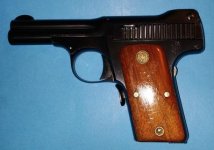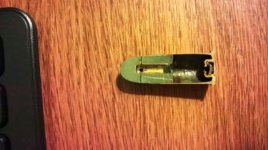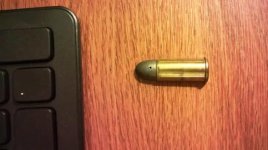opoefc
US Veteran
I disagree with Armyphotog's post that it is asking for trouble to shoot .32 ACP rounds in a Model 1913 S&W .35 auto. I have fired 1,000s or rounds of .32 cartridges in these .35 Autos and never had a problem, irrespective of the factory opinion that the power of the .32 acp was more than the .35 S&W round. The .32 is 0.011 in. smaller and of course the case expands slightly when used in the Model 1913. This has never caused problem in my experience, however I can agrees with the old warning of never fire a round in any gun that is not the round for which the gun was designed, is an appropriate safety caution. The barrels in these guns are .32 cal. and the exact same barrels were used to manufacture the .32 S&W pistols that followed the .35s. The original design of the .35 pistol was as a .30 Cal ( yes, Thirty Caliber) based on the Clement patent, and tooling was made to produce both .30 cal., .32 cal., and a .45 cal. pistol, but only the .32 was put into final production, and called a .35 cal. Joe Wesson, the designer of the Model 1913, felt that a half mantel jacketed bullet would lessen barrel wear, etc. Chuck Suydam's book "US Cartridges & Their handguns" gives all the dimensions of the .32 and .35 cal cartridges on pages 260-267, if you want to study those rounds. Ed.
Last edited:










